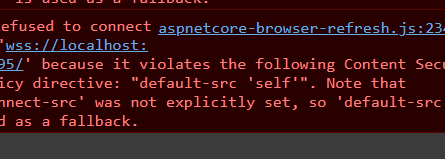In Canada, many people and households frequently face substantial debt burdens, stemming from a range of factors like unemployment, unexpected medical expenses, or overspending. Despite the challenges posed by such situations, there are effective avenues for alleviation, among them being the consumer proposal in Canada. This blog aims to conduct a thorough examination of the process of managing consumer proposals for debt relief options in Canada. It will delve deeply into the intricacies of this approach, spotlighting its benefits, intricacies, and ramifications. By doing so, it aims to furnish readers with a comprehensive grasp of how consumer proposals serve as a remedy for financial strain, thereby equipping them with the knowledge needed to make informed decisions regarding their debt management strategies.
Comprehending Requests from Consumer
A consumer proposal stands as a legally binding agreement facilitated by a licensed insolvency trustee Canada establishing terms between a debtor and their creditors. It outlines a structured repayment plan for debts, commonly extending over a period of up to five years. Offering an attractive option for individuals seeking debt relief without sacrificing their assets, a consumer proposal enables them to retain possessions such as their residence and vehicle, unlike the stringent measures of bankruptcy.
Qualifications and Methods
In order to qualify for a consumer proposal, debtors must have unsecured debt totaling less than $250,000 (principal residence mortgages excluded). To start the process, you must consult a licensed insolvency trustee guidance who will assess the debtor’s financial situation and assist in creating a repayment plan. The proposal is then sent to creditors by the trustee, who gives them 45 days to accept or reject it. Following acceptance, the debtor follows a predetermined payment plan to the trustee, who subsequently distributes the money to the creditors in line with the conditions that were mutually agreed upon.
Advantages of Requests from Consumer
Debtors experiencing financial hardship can find several advantages in consumer proposals. Primarily, they provide a structured and managed repayment plan, empowering debtors to regain financial autonomy without enduring the social stigma and severe consequences often associated with declaring bankruptcy. Moreover, consumer proposals bind all creditors to the agreed-upon terms, preventing further collection efforts and interest accumulation, unlike alternative debt relief solutions such as debt consolidation or credit counseling. Additionally, by allowing debtors to retain assets such as their home and vehicle, consumer proposals offer a more sustainable path to financial recovery Canada.
Effect on Credit Score
Yes, consumer proposals do affect a person’s credit score, but not as much and not as quickly as bankruptcy. Consumer proposals usually stay on the debtor’s credit report for three years after they are finished, or for six years after the date of filing, whichever comes first. During this time, getting new credit could be difficult and come with higher interest rates. Nevertheless, people can gradually rebuild their creditworthiness over time by practicing careful money management.
Things to Think About Before Accepting a Customer Proposal
Debtors should thoroughly assess their financial status and evaluate all of their options before choosing a consumer proposal. Consumer suggestions come with particular obligations and consequences, even while they provide relief from excessive debt. For example, if the provisions of the proposal are not followed, they may be annulled, making debtors open to legal action from creditors. Furthermore, even though consumer proposals let people keep their assets, they can need them to give up non-essential items or alter their way of life in order to fulfill their repayment commitments.
Looking for Expert Advice
Expert help is necessary to navigate the complexities of consumer propositions and make well-informed selections. Throughout this procedure, licensed insolvency trustees are essential because they provide debtors with individualized guidance and support at every turn. People may make sense of their alternatives, determine whether a consumer proposal is feasible, and create a customized payback plan that fits their budget by speaking with a trustee.
Conclusion
Conclusively, consumer proposals are an invaluable resource for Canadians who are drowning in debt. They offer a way out of debt while letting borrowers keep their necessary assets by providing a planned and controlled repayment schedule. To properly traverse the process, it is imperative to approach consumer suggestions with careful study and professional help. In the end, people can overcome their debt problems and start down the path to a better financial future by taking proactive measures and practicing prudent money management.
FAQs
1. How can individuals gradually rebuild their creditworthiness after completing a consumer proposal?
By consistently practicing responsible financial management over an extended period.
2. What factors should individuals contemplate before opting for a consumer proposal?
Considerations should include conducting a thorough evaluation of their financial situation and exploring all potential avenues for debt relief.
3. Is it necessary to seek guidance from a licensed insolvency trustee when contemplating a consumer proposal?
Yes, the expertise of a licensed insolvency trustee is essential in guiding individuals through the process.
4. What role do creditors fulfill in the consumer proposal procedure?
Creditors are given the opportunity to either accept or reject the proposal presented to them by the trustee.
5. Can debtors engage in negotiations regarding the terms of a consumer proposal with their creditors?
Certainly, discussions can occur between debtors and creditors before finalizing the proposal.
6. How can debtors ensure they select the most appropriate debt relief option for their specific circumstances?
By seeking professional advice and fully comprehending the ramifications of each available option.
7. Are there governmental initiatives accessible to aid individuals encountering debt issues in Canada?
Yes, several government programs and resources are available to provide support and assistance to individuals experiencing financial hardship.
8. What initial steps should individuals take if considering a consumer proposal for debt relief?
They should initiate the process by consulting with a licensed insolvency trustee to assess their options and develop a personalized plan suited to their financial needs.
#Mastering #Consumer #Proposals #Debt #Relief #Canada



